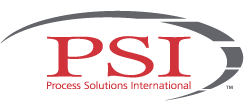Key Takeaways
- Understanding and following high-pressure pump safety measures minimize operational risks
- Thorough adherence to high-pressure pump specifications, safety protocols, and regular maintenance is crucial for sustainable pump performance
- Regular inspections and professional high-pressure pump repair help prevent malfunctions
- The correct use of tools and understanding of pump operations can significantly reduce risks
- Proper training is a critical aspect of working responsibly with high-pressure pumps
Understanding the Risks and Preparing for Safe High-Pressure Pump Operation
When working with high-pressure pumps, gaining an in-depth understanding of the potential risks is paramount. For anyone dealing with high-pressure pump operation, it is crucial to recognize hazards such as exposure to harmful chemicals, risk of ignition, and physical harm due to kinetic energy from the moving parts of the pump. On this note, it is essential to note that hydraulic pumps and motors, which are a common type of high-pressure pump, have widely found their applications across numerous industries, including aerospace and healthcare. Improper handling of these powerful tools could culminate in serious accidents and losses.
Therefore, precautionary measures must be taken into account to prevent such mishandling incidents. Ensuring the pump is being used appropriately, conducting routine inspections for leakage or damage, and adhering to lockout-tagout protocols during maintenance routines are all crucial aspects of safe operation. More vitally, the significance of high-pressure pump troubleshooting cannot be overstated. It is essential that workers steer clear of damaged pumps, promptly address overheating issues, and operate pumps with a thorough understanding of their design boundaries and capacities. With these considerations and precautions in place, high-pressure pump operation can be carried out in a way that mitigates risks, thereby ensuring a safe and efficient working environment.
Working with High-Pressure Pumps: Best Practices and Safety Protocols
In this section, we delve into the industry’s established best practices for handling high-pressure pumps. With safety as our foremost concern, we scrutinize a comprehensive range of topics, from the use of personal protective equipment to operational procedures, to support all parties involved in ensuring a secure working environment.
Personal Protective Equipment and its Significance
Key to high-pressure pump safety is the use of personal protective equipment (PPE). A first line of defense, PPE, safeguards workers from mechanical and chemical hazards associated with pump operation. Such safety gear for high-pressure pump handling includes gloves, safety glasses, and steel-toed shoes, offering comprehensive protection.

Inspection and Maintenance: Key to High-Pressure Pump Performance
Close inspections and diligent maintenance of high-pressure pumps are instrumental in optimizing their performance. Scheduled monitoring picks up early signs of wear and tear on critical parts, thus precluding system malfunctions. Centrifugal pump inspection, for instance, involves checking impellers, shaft seals, electrical connections, and other vital components. All safety systems are also verified for adequate functionality. Recording high-pressure pump maintenance records is another critical practice, helping us monitor the system’s health over time and ensuring that replacement parts align perfectly with operational standards.
Operating Procedures and Emergency Protocols
Following prescribed operational procedures plays a pivotal role in enforcing high-pressure system safety protocols. Detailed guidelines for start-up and shutdown procedures are designed to confirm the correct operation of the pump and system components, minimizing any scope for mishaps. Emergency shutdown procedures are in place to guide operators during unforeseen incidents like leaks or system failures. Through these, immediate shutdown and isolation of the pump can be carried out, thereby curtailing the extent of any potential hazards as much as possible.
Special Considerations for Troubleshooting and Repair
The troubleshooting and repair of high-pressure pumps necessitate unique considerations to uphold safety. Strict rules govern this area, for instance, forbidding anyone from attempting to repair a running pump. It’s essential to shut down the pump instantly should there be any leaks or overheating. Only trained professionals are entrusted with replacing worn components in a timely manner, a measure crucial to preventing accidents and ensuring the pump’s operation remains intact. Safe pump repair practices such as these have proven integral to maintaining a safe work environment when handling high-pressure pumps.
| Safety Protocols | Description |
|---|---|
| Use of PPE | Safety gear acts as the first line of defense against mechanical or chemical hazards. |
| Regular Inspection | Routine monitoring ensures that any deterioration is detected early, preventing any system malfunctions. |
| Adherence to Operational Procedures | Detailed guidelines ensure correct operations of the pump, reducing the risk of mishaps. |
| Emergency Protocols | Prepared procedures guide employees in case of emergencies, ensuring immediate response to crises. |
| Troubleshooting and Repair Rules | Strict rules for repair ensure safety and prevent accidents.’ |
Conclusion
In conclusion, the safety and reliability of high-pressure pumps are undeniably intertwined with the stringent observance of established safety protocols and measures. It’s at the core of what we believe in – maintaining non-negotiable standards that keep us and the environment safe. Central to this safety doctrine is the idea of enlightenment and vigilance. We insist that no high-pressure pump operation, maintenance, or repair should be undertaken without adequate training. That said, it’s not only about the big procedures. The small moments, like donning safety gear and keeping an alert eye on operational changes, matter too. Co-options to our work are not only personal but also translate to better efficiencies of our high-pressure systems. It’s our duty to enhance pump safety practices, and in doing so, we ensure not just our safety but that of everyone involved, directly or indirectly. This can only lead to better performance and operational efficiency of the pumps. In essence, it’s a mantra to remember for all who interact with high-pressure pumps on a daily basis. Let safety be the compass that guides all actions and decisions when we’re dealing with these mighty machines. Here’s to honoring our commitment to high-pressure pump safety and reliability today and moving towards a safer, more efficient tomorrow.

